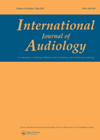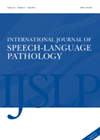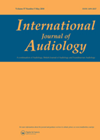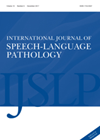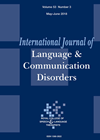
Journal Reviews
The ‘My Hearing Explained’ tool: audiologist and client perceptions
The study notes that the pure tone audiogram has been the primary clinical and counselling tool used by clinicians to assess and describe hearing thresholds to individuals and families since 1922. The Ida Institutes, ‘My Hearing Explained’ tool has become...
Doing it for the people: how to do speech and language therapy
This review article distils 58 studies, collating information from people with aphasia, their families and clinical speech and language therapists summarising the seven habits of highly effective aphasia therapists. Habit 1: Effective therapists invest time in and prioritise relationships with...
Virtual human speaker
The aim of the discussed study was to develop and evaluate a 3D virtual speaker that could use pre-recorded audio-material and possibly be used for audio-visual speech testing in the future. The authors developed the terminal-analogue method that allows to...
Hearing loss and social support
The aim of this above study was to investigate how perceived social support and the hearing loss handicap may be influenced by residency and demographics. A total of 106 participants were tested, 71 of them with hearing loss. Thirty of...
CBT for tinnitus and hyperacusis
Finding an efficient treatment for tinnitus attracts the interest of researchers worldwide. Cognitive behavioural therapy (CBT) is one of the widely researched methods used in tinnitus management. The aim of this study was to investigate what proportion of patients complete...
British English speech test for occupational hearing assessment
It is very important to properly assess occupational fitness for several occupations such as police officer, military personnel or fire fighter. The aim of this study was to develop a British English speech in noise (SiN) test as a tool...
Self-report of hearing aids handling difficulties
The authors have raised an interesting subject concerning the ability of customers to self-assess their hearing aid handling skills. Previous studies showed that 96% of customers when asked if they are able to manage their hearing aids answered ‘yes’. However,...
Same, same: similarities in conversation between people with dementia and aphasia and their loved ones
This article proposes that studying the commonalities between the effect of dementia and aphasia (post stroke language impairment) on communication could result in greater sharing of clinically relevant interventions. To date the separate study has resulted in significant separation of...
Literacy and communication skills of young offenders
This article elucidates the perceptions and experiences of young offenders about their own literacy and communication skills. Young offenders (YOs) are usually between the age of 14 and 16. It is estimated that more than 60% of these offenders have...

